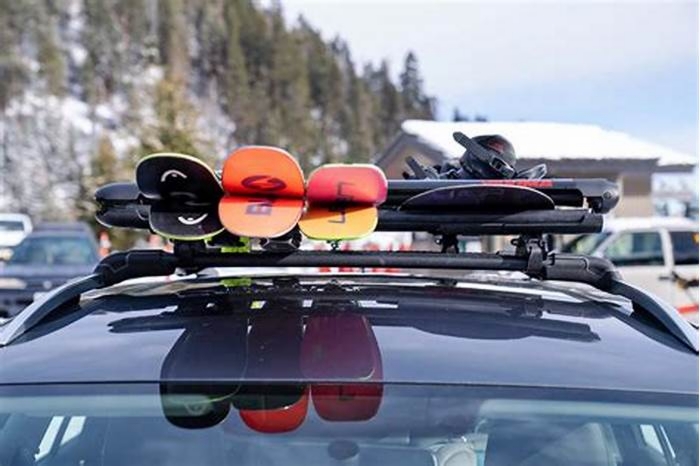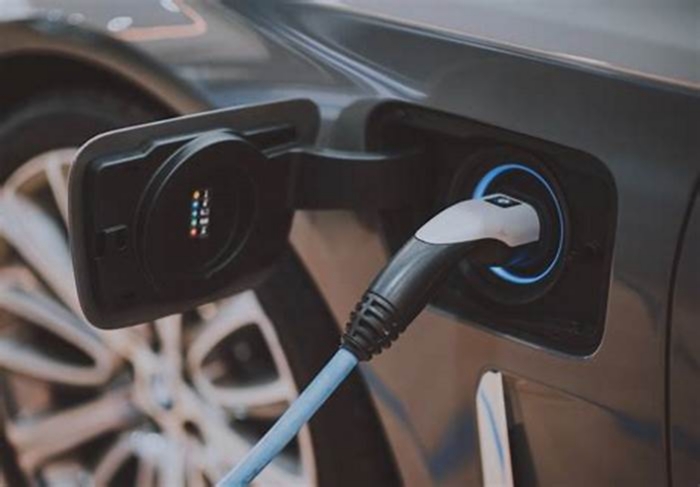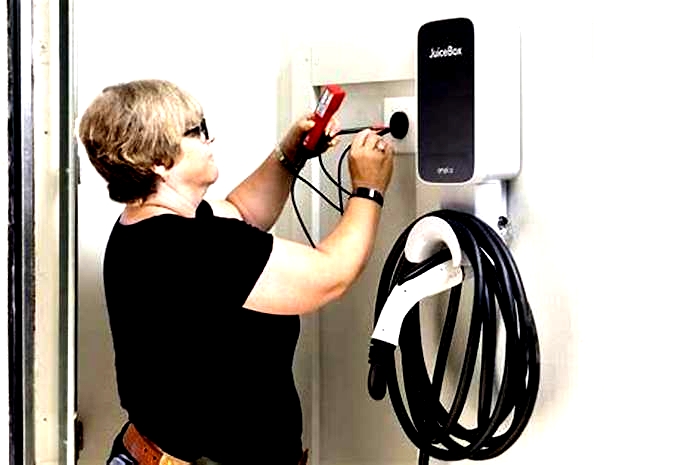Electric Vehicle Roof Rack Installation Choosing the Right Rack and Mounting It Yourself

The Ultimate Guide to Roof Rack Cross Bars: Types, Installation, and Maintenance
When it comes to transporting gear on the roof of your vehicle, a roof rack system is an essential accessory. And at the heart of any roof rack system are the cross bars. Roof rack cross bars provide a secure platform for attaching roof rack accessories such as cargo boxes, bike racks, ski racks, and kayaks. But with so many types, sizes, and weight capacities available, choosing the right roof rack cross bars can be a daunting task. In this guide, we'll cover everything you need to know about roof rack cross bars, including types, installation, and maintenance tips.
Types of Roof Rack Cross Bars
There are several types of roof rack cross bars available on the market, each with its own advantages and disadvantages. Here are some of the most common types:
Factory cross bars
These are the cross bars that come standard with many vehicles. They are designed to fit seamlessly with the roof rails of the vehicle and can usually be adjusted to fit different roof rack accessories. Factory cross bars are often made from lightweight materials such as aluminium and have a lower weight capacity compared to aftermarket options.
Aero cross bars
Aero cross bars are designed to reduce wind noise and drag while driving. They have a sleek, aerodynamic shape that minimises wind resistance, which can improve fuel efficiency. Aero cross bars are often made from lightweight materials such as aluminium or composite materials.
Square cross bars
Square cross bars are the most common type of aftermarket cross bars. They are usually made from steel or aluminium and have a higher weight capacity compared to factory cross bars. Square cross bars are also versatile, as they can be used with a wide range of roof rack accessories.
Oval cross bars
Oval cross bars are similar to aero cross bars in terms of their shape, but they have a wider profile that provides more surface area for attaching accessories. Oval cross bars are often made from aluminium or composite materials.
Round cross bars
Round cross bars are the simplest and most affordable type of cross bars. They are usually made from steel or aluminium and have a lower weight capacity compared to other types. Round cross bars are best suited for light-duty applications such as carrying bikes or kayaks.
Installation of Roof Rack Cross Bars
Installing roof rack cross bars can vary depending on the make and model of your vehicle and the type of cross bars you are using. However, there are some general guidelines that can help you with the process:
Check the weight capacity
Before installing the cross bars, make sure to check the weight capacity of your vehicle's roof and the cross bars themselves. Exceeding the weight limit can cause damage to your vehicle and create safety hazards on the road.
Position the cross bars
Most roof rack systems require you to position the cross bars at a specific distance apart. This distance can vary depending on the type of roof rack accessory you are using. Make sure to follow the manufacturer's guidelines for the correct spacing.
Attach the cross bars
Attach the cross bars to the roof rails or roof rack system using the appropriate mounting hardware. Make sure to tighten the bolts or clamps securely to prevent the cross bars from shifting or coming loose while driving.
Test the cross bars
After installation, give the cross bars a gentle tug to make sure they are secure. It's also a good idea to test the cross bars
with the weight of your gear before hitting the road.
Maintenance of Roof Rack Cross Bars
Proper maintenance of your roof rack cross bars is essential to ensure their longevity and safety. Here are some maintenance tips:
- Clean the cross bars regularly: Dirt, grime, and other debris can accumulate on the cross bars, which can cause rust or corrosion over time. Use a soft-bristled brush and mild soap to clean the cross bars regularly. Rinse thoroughly and dry with a clean towel.
- Check the mounting hardware: The mounting hardware that attaches the cross bars to the roof rails or roof rack system can loosen over time due to vibrations or changes in temperature. Check the mounting hardware periodically and tighten as necessary.
- Inspect the cross bars for damage: Check the cross bars for any signs of damage such as cracks, bends, or corrosion. If you notice any damage, replace the cross bars immediately to prevent any safety hazards on the road.
- Store the cross bars properly: When not in use, remove the cross bars from the roof of your vehicle and store them in a dry, cool place. This will help to prevent rust and other damage.
Weight Capacity of Roof Rack Cross Bars
The weight capacity of roof rack cross bars can vary depending on the make and model of your vehicle and the type of cross bars you are using. It's important to check the weight capacity before loading any gear onto the roof of your vehicle. Exceeding the weight limit can cause damage to your vehicle and create safety hazards on the road.
Most roof rack cross bars have a weight capacity of between 50 and 200 pounds, depending on the type and material of the cross bars. If you're planning on carrying heavy gear such as a rooftop tent or multiple kayaks, make sure to choose cross bars with a higher weight capacity.
Conclusion
Roof rack cross bars are an essential accessory for transporting gear on the roof of your vehicle. Choosing the right type of cross bars, installing them correctly, and maintaining them properly can help to ensure a safe and enjoyable road trip. By following the guidelines in this guide, you'll be able to select the best roof rack cross bars for your needs, install them securely, and maintain them for years to come.
Frequently Asked Questions
What is the weight capacity of roof rack cross bars?
The weight capacity of roof rack cross bars varies depending on the brand and model. It's important to check the specifications of the cross bars before purchasing them. The weight capacity is usually indicated in pounds or kilograms and is the maximum weight that the cross bars can safely support.
How do I choose the right type of cross bars for my vehicle?
To choose the right type of cross bars for your vehicle, you need to consider the weight capacity, the shape of the cross bars, and the compatibility with your vehicle's roof rails or mounting points. You can find this information in your vehicle's manual or by consulting with a professional.
Can I install roof rack cross bars on a vehicle without roof rails?
Yes, you can install roof rack cross bars on a vehicle without roof rails using a clamp system that attaches to the door frames. However, this method may not be as secure or stable as installing the cross bars on a vehicle with roof rails or mounting points.
How do I install roof rack cross bars?
The installation process for roof rack cross bars varies depending on the brand and model. Generally, you will need to remove any existing covers or end caps on the roof rails, align the cross bars with the rails, and tighten the mounting hardware. It's important to follow the manufacturer's instructions carefully and double-check that the cross bars are securely fastened.
How do I maintain my roof rack cross bars?
To maintain your roof rack cross bars, you should regularly clean them with soap and water and inspect them for any signs of damage or wear. You should also check the mounting hardware periodically to ensure that it is tight and secure. Avoid using abrasive cleaners or tools that could damage the cross bars.
Can I exceed the weight limit for roof rack cross bars?
No, you should never exceed the weight limit for roof rack cross bars. Doing so could damage the cross bars, your vehicle, or your cargo and could pose a safety risk. Always check the weight capacity of your cross bars and make sure that you stay within the limit.
Can I use aftermarket cross bars on my vehicle?
Yes, you can use aftermarket cross bars on your vehicle as long as they are compatible with your vehicle's roof rails or mounting points and meet the weight capacity requirements. It's important to choose high-quality cross bars from a reputable brand to ensure safety and reliability.
How do I remove roof rack cross bars from my vehicle?
The removal process for roof rack cross bars varies depending on the brand and model. Generally, you will need to loosen the mounting hardware and carefully slide the cross bars out of the roof rails. It's important to follow the manufacturer's instructions carefully and avoid damaging the cross bars or your vehicle.
Can I use roof rack cross bars for a rooftop tent?
Yes, you can use roof rack cross bars for a rooftop tent as long as they meet the weight capacity requirements and are securely mounted. It's important to check the manufacturer's recommendations for your specific tent and cross bar model.
What are the benefits of using roof rack cross bars for transporting gear?
Using roof rack cross bars for transporting gear can free up space inside your vehicle and make it easier to transport bulky items such as bikes, kayaks, or skis. Cross bars also provide a secure and stable platform for your cargo, reducing the risk of damage to your vehicle or your belongings.
A DIY Guide to Installing Roof Racks Without Rails
Craving adventures but your car lacks those coveted roof rails? Fear not, wanderlust warriors! Installing a roof rack on a bare roof is perfectly achievable with the right knowledge and tools. This detailed guide will equip you with the know-how to transform your roof into a versatile cargo carrier, ready for kayaks, bikes, luggage, and all your outdoor gear.
Preparing for Takeoff:
Before you dive into installation, gather your essentials:
- Roof rack kit:Choose a kit designed for cars without rails.Popular options include door-mounted,clamp-on,and inflatable systems.Each offers unique advantages and compatibility specifics,so research carefully.
- Tools:You'll likely need screwdrivers,wrenches,tape measures,and a level.Some kits require additional tools,so check the instructions.
- Cleaning supplies:Remove dirt,dust,and wax from your roof to ensure proper adhesion.
- Patience and a sense of adventure!
Choosing Your Path:
The installation method depends on your chosen roof rack type:
Door-Mounted Systems:
- Pros:Secure,stable,often compatible with a wide range of vehicles.
- Cons:Requires accessing interior door panels,might not work with sunroofs.
- Steps:
- Follow the kit instructions to remove interior door panel trim pieces.
- Secure mounting plates within the door frame using pre-existing bolts or provided hardware.
- Reinstall door panel trim,ensuring no interference with opening/closing.
- Attach the roof rack crossbars to the mounted plates on the car roof.
Clamp-On Systems:
- Pros:Easy to install and remove,generally budget-friendly.
- Cons:May not be as secure as door-mounted systems,weight capacity might be lower.
- Steps:
- Locate designated clamping points on your car's roof frame (consult the kit instructions for specific locations).
- Position the clamp bases and tighten them securely,following the torque specifications provided.
- Attach the roof rack crossbars to the mounted clamps.
Inflatable Systems:
- Pros:Lightweight,portable,and easy to store.
- Cons:Lower weight capacity,might require regular inflation,not suitable for all roof shapes.
- Steps:
- Locate the designated anchor points on your car's roof frame as per the kit instructions.
- Secure the inflatable pads to the anchor points and inflate them to the recommended pressure.
- Attach the roof rack crossbars to the inflated pads.
Landing a Smooth Installation:
Here are some helpful tips for a successful roof rack installation:
- Read the instructions carefully!Each kit has specific nuances,so following the manufacturer's guidelines is crucial.
- Enlist a friend!Having an extra pair of hands can make the process easier and faster.
- Work in a well-lit area with comfortable space.
- Double-check all connections and tighten bolts to the specified torque.
- Test the roof rack's stability before loading it with cargo.
Beyond the Basic Climb:
Remember, installing a roof rack is just the beginning of your cargo-carrying adventures. Here are some additional points to consider:
- Weight capacity:Ensure your chosen roof rack and your car's roof can handle the intended load safely.
- Securing your cargo:Invest in proper straps,tie-downs,and nets to secure your gear properly.
- Aerodynamics:Roof racks can increase wind resistance and decrease fuel efficiency.Drive cautiously and adjust your speed accordingly.
- Regular maintenance:Check your roof rack and mounting points periodically for any signs of wear or damage.
So, gear up, embrace the DIY spirit, and conquer the bare roof! With careful planning and this guide as your compass, you'll be ready to transform your car into a versatile adventure companion, ready to carry you and your dreams to any destination.
Frequently Asked Questions
Is it safe to install a roof rack on a car without rails?
Yes, installing a roof rack on a bare roof is safe as long as you choose a kit compatible with your specific car model and follow the installation instructions carefully. Ensure the weight capacity of the rack and your car's roof match your planned cargo. Always prioritize safety and never overload the rack.
Which type of roof rack is best for my car without rails?
The best type depends on your needs and budget. Door-mounted systems offer high stability, clamp-on systems are budget-friendly and easily removable, while inflatable systems are lightweight and portable. Research compatibility and weight capacity before making your choice.
Can I install a roof rack myself if I'm not handy?
While many kits are designed for DIY installation, don't hesitate to enlist a friend or seek professional help if you're unsure about any steps. Safety comes first, especially when dealing with tools and working on your car.
What if I have a sunroof?
Some roof rack kits might not work with sunroofs. Check compatibility details before choosing a kit and consult the manufacturer if unsure. Remember, never obstruct the sunroof's operation or compromise its safety features.
How much weight can I safely put on my roof rack?
The weight capacity depends on your car's roof strength, the chosen rack's specifications, and the individual crossbar rating. Never exceed the weight limits to avoid compromising safety and risking damage to your car or cargo.
How can I secure my cargo safely on the roof rack?
Invest in high-quality straps, tie-downs, and cargo nets specifically designed for roof rack use. Double-check all straps and knots before driving and adjust them as needed during your journey. Remember, proper securing is crucial for safety and preventing accidents.









